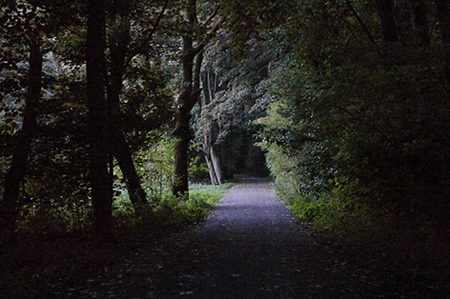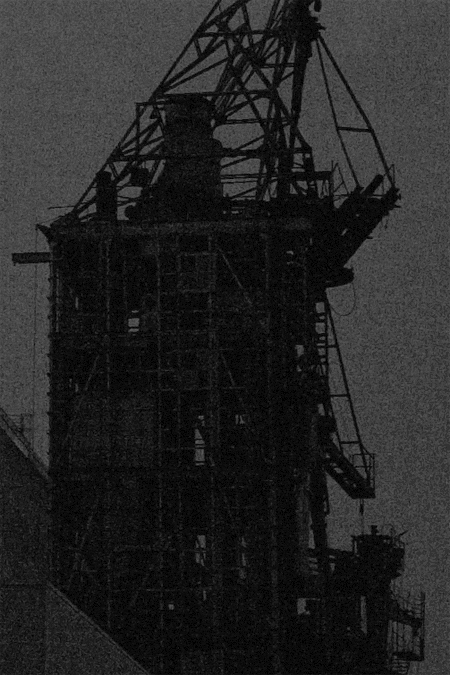User:Nicole Hametner/Trimester4: Difference between revisions
| Line 43: | Line 43: | ||
== Workplan == | == Workplan == | ||
The visual research is devided in two parts: | The visual research is devided in two parts: | ||
* | * Recording of the footage (image and sound) | ||
* | * Tests and observations of the display in a dark room | ||
Until now I have done some [http://pzwart3.wdka.hro.nl/wiki/User:Nicole_Hametner/Graduate_Research_Seminar_2013-TM4.04<font color="black">small experiments</font>] which help me to reflect about the graduation project.<br> | Until now I have done some [http://pzwart3.wdka.hro.nl/wiki/User:Nicole_Hametner/Graduate_Research_Seminar_2013-TM4.04<font color="black">small experiments</font>] which help me to reflect about the graduation project.<br> | ||
For the next series of test shots, I will record an image sequence using long exposures to create still images, which will then be played back at 24 frames per second. My subjects will be a water surface, static buildings and the human figure. It is an experiment between duration and the instant, between distinct temporal operations and what lies hidden in long exposures through overlaying, condensing, and synthesis. During these test shots I will also investigate the stillness of the model in the portraits, the act of concentration, his or her focus on the recording camera and vice versa. <br><br> | For the next series of test shots, I will record an image sequence using long exposures to create still images, which will then be played back at 24 frames per second. My subjects will be a water surface, static buildings and the human figure. It is an experiment between duration and the instant, between distinct temporal operations and what lies hidden in long exposures through overlaying, condensing, and synthesis. During these test shots I will also investigate the stillness of the model in the portraits, the act of concentration, his or her focus on the recording camera and vice versa. <br><br> | ||
Revision as of 01:17, 2 December 2013
Project proposal
Introduction
|
|
Tentative title: Oscillating Shadows
|
|
Relation to previous practice
For a better understanding of how I got to this point, it is useful to look back at the origin of my investigations with photography and its time-based image.
Several interests and points of research have built a background that serves as constant reference that flows into the concrete creation of a new work. For example, my current research on the construction of the image and the behaviour of the medium can be found in previous photographic works, which was once again activated by a curiosity in the digital moving image, which seemed to me to be the counterpart of the stillness in analogue photography. Furthermore, my exploration of the gaze in the portrait works treats, with its subtle movement, the idea of presence and absence that constitutes the whole construction of the time-based image and links to my previous work Black Light, 2010.
The theme of the night always allowed me to talk about the process, the latent image and to reveal the unseen. To sum up, my initial period of research into the theme of disappearance in photography together with the theme of the „nocturne“ from the romantics, links to my current interest in the subject of the limits of perception.
The crucial unique instant while triggering the photograph turned into duration while using long exposures, which I used a lot in my previous works. Now, through thinking about the construction of the digital moving image time again plays an important role and presents the idea that the image as such is never present as a whole (Videophilosophie, Maurizio Lazzarato). This intriguing insight links to the role of the observer, her perception and the question of where the actual image is created, and what it means if it never exists all at once? These reflections increased my curiosity in the origin of the image, which can be understood as the foundation that drives me in my current research. I am heading towards the construction and dissolution of the image, which moves between materiality and pure signal, between duration and instant; searching for the missing link and the space and time in between, at the threshold of abstraction.
Relation to larger context
Using a background in photography, I am exploring the electronic moving image towards the presentation of work in a video installation.
Workplan
The visual research is devided in two parts:
- Recording of the footage (image and sound)
- Tests and observations of the display in a dark room
Until now I have done some small experiments which help me to reflect about the graduation project.
For the next series of test shots, I will record an image sequence using long exposures to create still images, which will then be played back at 24 frames per second. My subjects will be a water surface, static buildings and the human figure. It is an experiment between duration and the instant, between distinct temporal operations and what lies hidden in long exposures through overlaying, condensing, and synthesis. During these test shots I will also investigate the stillness of the model in the portraits, the act of concentration, his or her focus on the recording camera and vice versa.
Thesis proposal
The shift from stillness to the moving image is based on my interest in the threshold as something that is in constant movement, and thereby articulates the theme of presence/absence and disappearance. In addition to this, the juxtaposition of the analog photographic image and the digital moving image evokes the question of indexicality and its materiality. My essay Black Box written in the second trimester explores what is being transformed or "lost" in the analog digital conversion. For the thesis I would like to key into this point and question the construction of the image itself. Is the image dissolved during the process of conversion? And when it is argued that the digital moving image is under constant construction, in constant flow, and therefore never there as a whole, where lies its origin and what or who is then responsible for the finally perceived image?
Bibliography
- Maurizio Lazzarato, Videophilosophy
- Henri Bergson, Matter and Memory
- Laura U. Marks, How Electrons Remember
- Gilles Deleuze, The Movement Image and The Time Image
- Mary Ann Doane, The Emergence of Cinematic Time
- Jonathan Crary, Techniques of the Observer and Suspensions of Perception
- Barbara and Joseph Anderson, The Myth of Persistence of Vision Revisited
- Kaja Silverman, The Threshold of the Visible World
- Between Stillness and Motion, Edited by Eivind Rossaak
- Laura Mulvey, Death 24 Times a Second
- Paul Virilio, L'Art à Pert de Vue
- Tanizaki Junichiro, Praise of Shadows
- TJ Clark, The Sight of Death
- Daniel Arasse, Anachroniques


